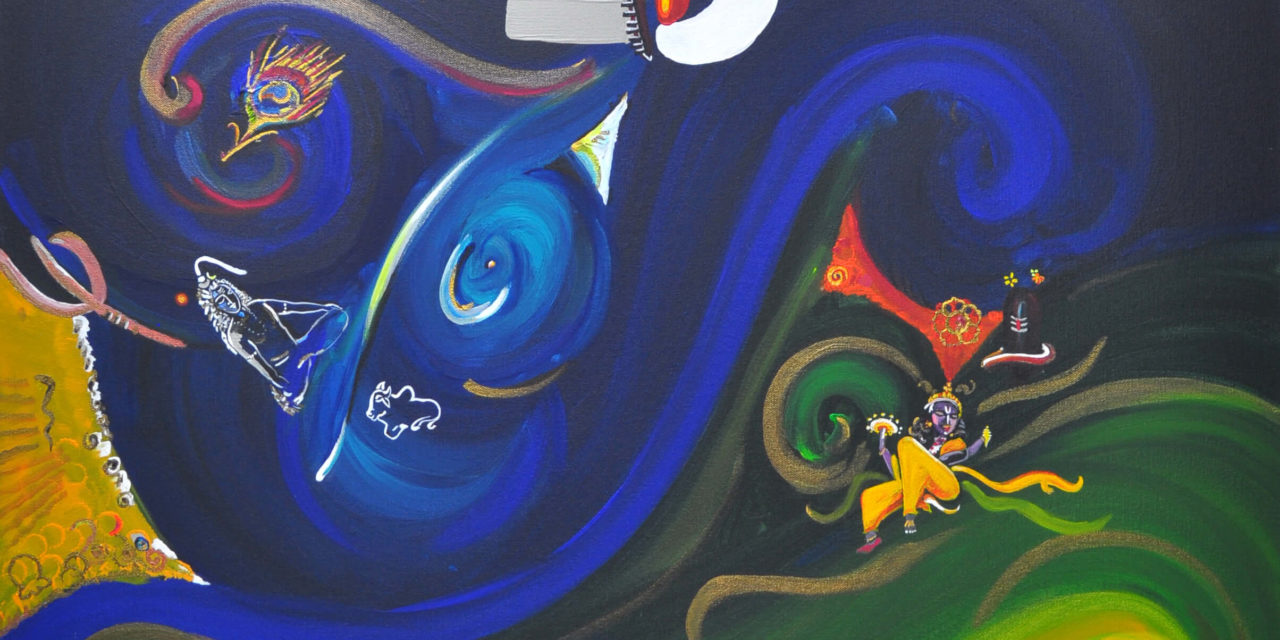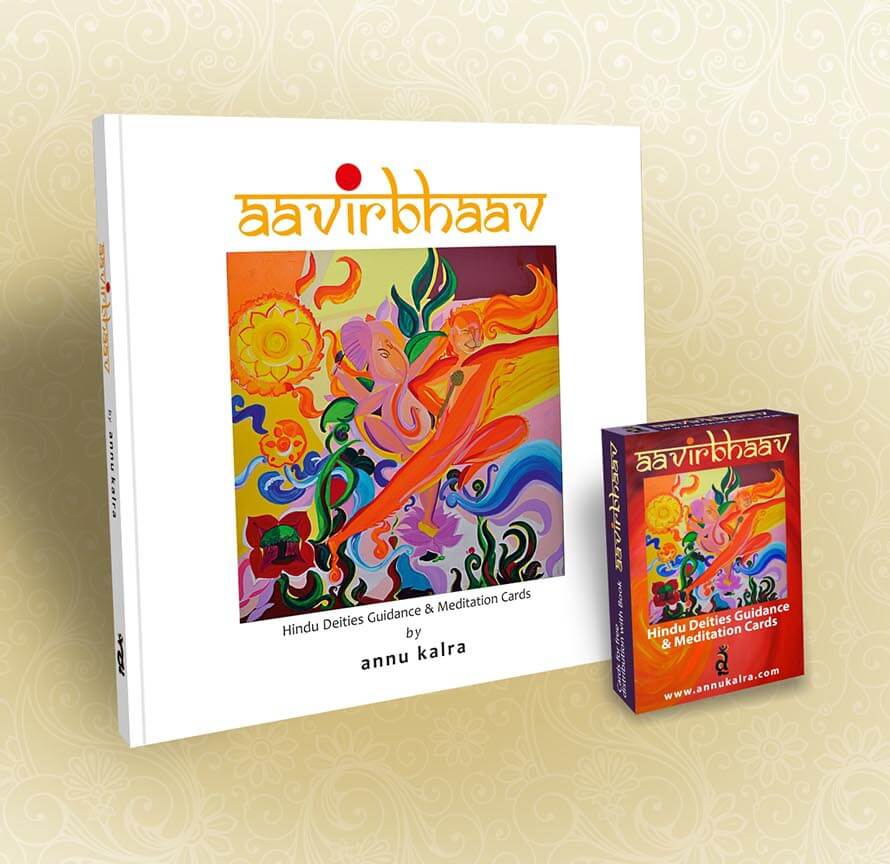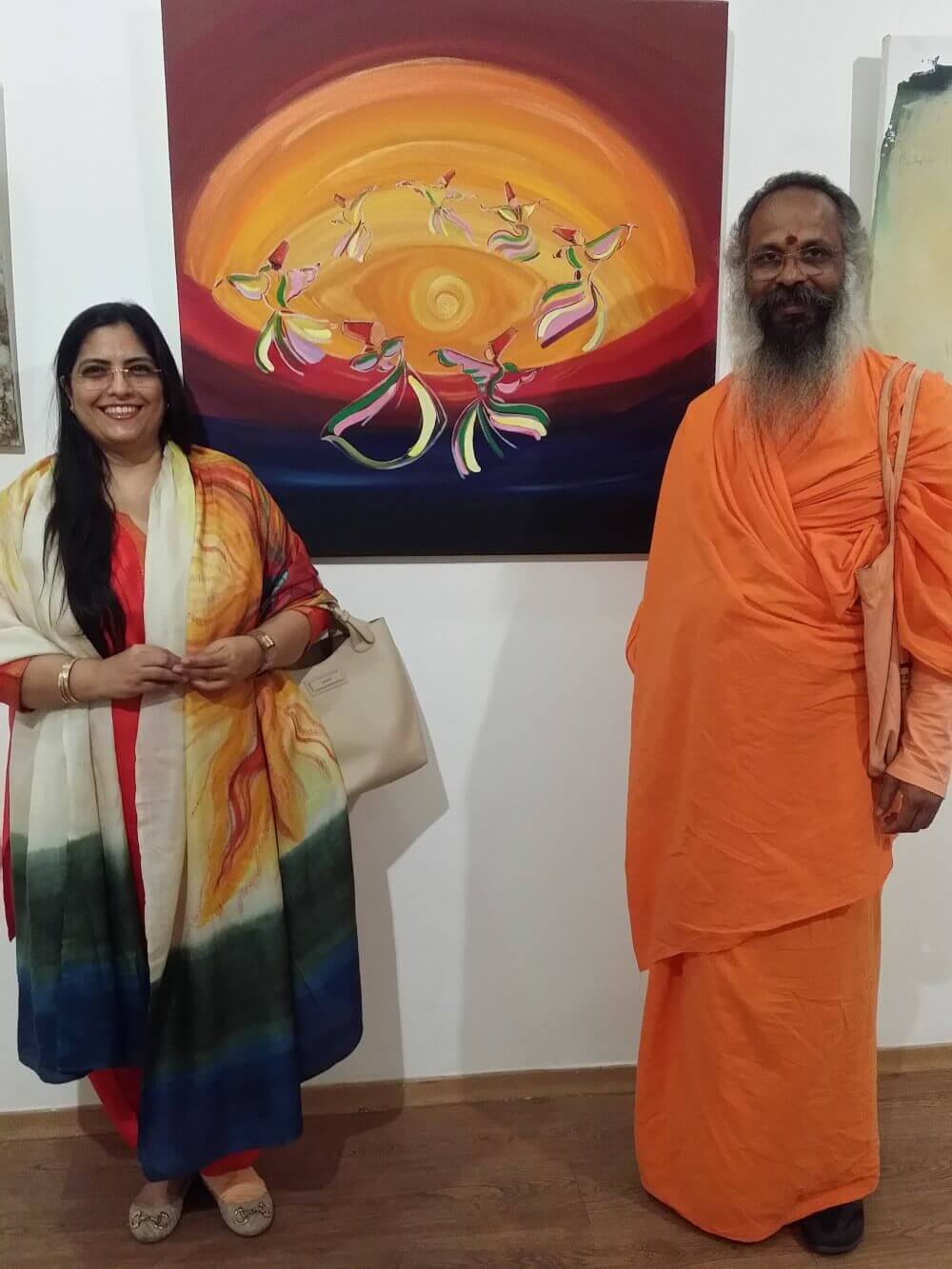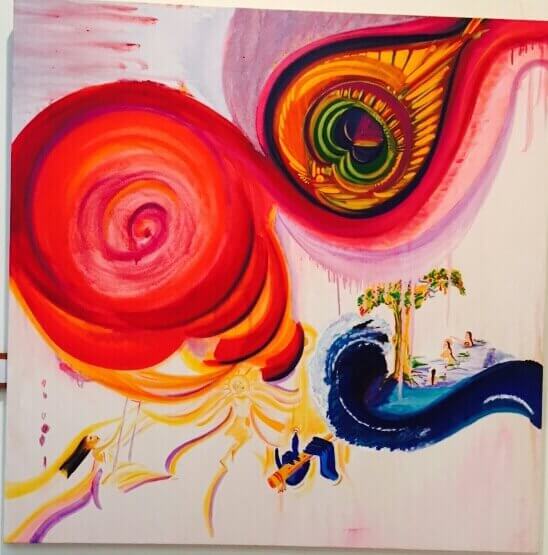The Samundar manthan (Churning of the Ocean) story is a very well known one. I had many years back written an interpretation of the same from the perspective of a Spiritual aspirant. But like all stories of traditional wisdom there are alternative interpretations and not merely from the spiritual perspective but also many other.
The Leela of Kanhaiya(story of Krishna) can be a lesson on child psychology as well as advice on pediatric health & nutrition. It has in it references to and examines attitudes towards surrogacy and parenting that are relevant even in the current times.
Recently at an event by the NGO Bharat Nirman, I had the privilege of sharing my views on how traditional wisdom can support corporate growth and can be decoded in a manner that it adds value to our current understanding of life. I did also receive a Build India Award for Art at the event, but that’s another story!
About the stories in Hinduism it is said that each one can be understood upto as many as seven levels. The stories are presented in larger than life colourful characters that fascinate and remain in our minds when we hear them as kids. The drama and fantastic powers of the characters inspire our childhood and remain in our hearts even as adults. As our understanding becomes more subtle and evolved, they reveal to us insights that further deepen our understanding of ourselves and life.
Let’s look at the case of the poison that emerges from samudra manthan. The fact that the task of churning the ocean for a pious objective as extracting nectar(Amrit) can also yield a poison as potent as Halahal is a lesson for those who complain that when their objectives are noble why do they face onerous circumstances. Because that is just how life is!
Even the very act of samudra manthan is testimony to the power and need of collaboration among conflicting forces when faced with a humongous task. In the face of natural disasters we have often seen warring forces work together carrying out relief activities. When there exists commonality in objectives, all disputes can be transcended to arrive at a plan that serves the common purpose.
The act of Lord Shiva being called upon to handle the poison is tantamount to outside Consultants being brought in to handle circumstances that teams no longer can. In the story of samudra manthan, while Lord Vishnu had actively participated, Lord Shiva had stayed out! However, when an emergency arose beyond the capacity of the current team, help of experts who were earlier uninvolved was sought.
Now on the subject of why Shiva on swallowing the poison does not ingest it but instead holds it in his throat. The interpretation that if he had swallowed it he may have died is misguided. Had he ingested and therefore digested it, the poison would have ceased to exist, not Shiva. He who could swallow it definitely could have also had the capacity to survive that venom. But the point being made is that Poison too is useful in Creation and therefore needs to be retained. Take the eg. of Morphine, which in large amounts can kill a person, in small doses can relieve excruciating pain.
But the moot question is why was it held in the throat? Like every powerful story, no aspect of this story is random. Could it be merely to give him yet another name Neelkantha, in addition to the 1007 other names he has? I don’t think so.
The throat is the location of the Vishuddhi chakra, the centre for higher creativity, which is Blue in colour. The lesson there is that what is considered poisonous, if channelized creatively can become useful for society. It can create opportunities for other beings. One could see this in the completely material sense of creating something useful out of waste & excreta such as bio gas or compost. One could also look at it from the psychological aspect of creatively transforming vices and fears into great Art and Innovations. A hyperactive child can learn to succeed at some sport or play some percussion instrument. Shiva is afterall the Great Transformer. When the transformative force comes to one’s aid, the so called negative too can be converted into something meaningful.
Every Brand management person knows how each and every aspect of the brand imagery and persona of a Brand is nurtured and developed over time. With the changing and dynamic social and economic context, brand values too alter and evolve. Only then can they stay relevant to the consumer and enhance his/her product experience. We too, instead of taking sides and getting labeled in one way or the other, need to focus on mining our traditional stories, gain insights from the various aspects and use those learnings to live more meaningful and peaceful lives. This churn, that we as a society are currently going through also has to be seen for what it is, an opportunity to transform.
In anticipation















Very profound, and very relevant. All your examples reinforce the principle of the same substance in certain dosages capable of being both medicine and poison. Everything has its role in the scheme of things… Duality comes but from the single. Very well constructed.
what a lovely insight!